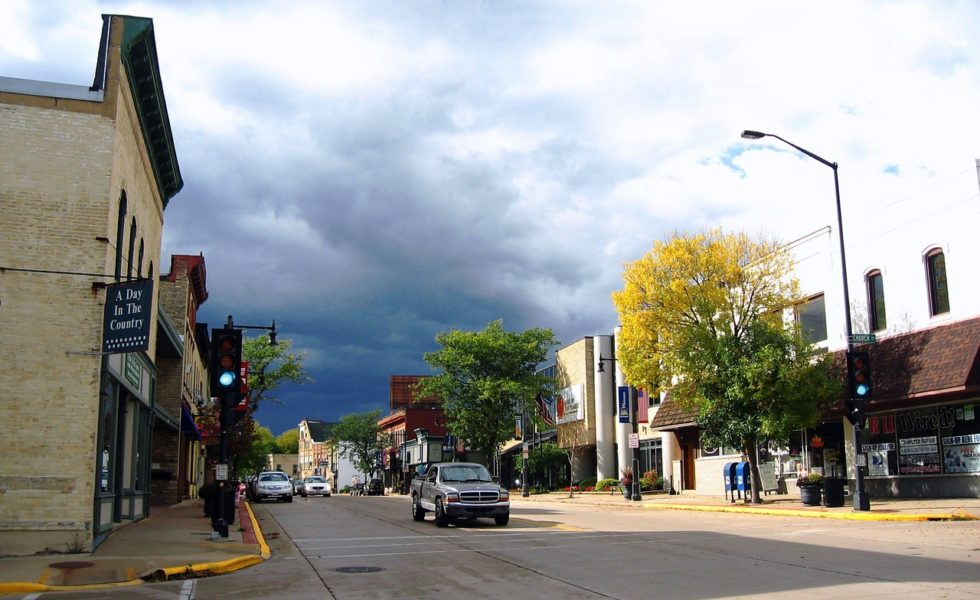Rising Woe in Rural America
Posted on January 3, 2018

The gap between America’s rural poor and non-poor, like in urban America, continues to widen. The difference in rural America, however, is that the gap is widening faster than in any of the nation’s grittiest cities or suburban counties.
That’s the conclusion of two recent reports by the U.S. Department of Agriculture (USDA) and the University of New Hampshire’s Carsey School of Public Policy. Both point to a dramatic downturn in rural America’s economic and social outlook over the past decade and neither sees many signs of a quick turnaround.
The USDA report, issued Nov. 7, shows that for the first time in the nation’s history rural (or “nonmetro”) America lost population. Indeed, between 2010 and 2016 a historically high 1,351 rural counties lost population while only 487 rural counties had positive—albeit very small—population growth.
The losing rural counties lost far more overall: 790,000 lost to only 281,000 gained.
Not all counties gained big or lost little. Nearly 140 rural counties, found USDA, grew by a collective 317,000. Many of those gains, however, were in rural areas that rode the shale oil and crude oil boom after 2010. Some of those people, however, like the boom itself, are now gone.
Another “unanticipated trend” contributing to lower rural population, explains USDA, is the “increased mortality among working-age adults.” A terrible contributor to this unforeseen increase is the “Rising rates of prescription medication abuse, especially opioids, and the related rise in heroin-overdose deaths… [Both] are contributing to this unprecedented rise in age-specific mortality rates after a century or more of steady declines.”
Perhaps most devastating, the “age specific” groups identified by USDA are the very people rural America needs for a hopeful future. “Between 1999-2001 and 2013-2015, rural mortality increased more than 20 percent for 25- to 29-year-olds… Mortality rates also increased for rural adults between the ages 20-24 and 30-54…”
Even worse, reckons USDA, the rural drug crisis, “… if it continues, will not only lower rural population but will increase what is known as the dependency ratio: the number of people likely to be not working (children and retirees) relative to people likely to be wage earners (working-age adults).”
If this isn’t the rural America you see when you go to town for coffee or take in the local high school basketball game you need to alter your route and broaden your view.
Rural America is both bleeding people and its people are bleeding. Grocery stores, doctor’s offices, and churches aren’t just going; they’re gone. Most, in fact, are long gone. Rural wages aren’t just low; they substantially “lag” behind metro wages. And rural median household income isn’t just less than in the city; it “has averaged 25 percent below the urban median since 2007.”
Moreover, poverty in rural counties is rising rapidly, according to the University of New Hampshire study. Between 2000 and 2013, “the number of nonmetropolitan counties with poverty rates of 20 percent or more increased from 416, or 20.6 percent of all nonmetropolitan counties, to 657, or 32.5 percent of all nonmetropolitan counties…”
And if that isn’t bad enough news, “[T]he share of the rural population living in these places nearly doubled from 17.5 to 31.6 percent,” notes the research.
That dramatic increase in rural poverty—during a period when average U.S. wages rose nearly 37 percent, from $32,921 to $44,888—is both shocking and revealing. Shocking in that poverty, at 16.7 percent of the nation’s overall rural population, is nearly 4 percentage points higher than overall urban poverty, and revealing in that no one outside of rural sociologists seemed to even notice its rise.
Not so shocking, however, is that few policymakers are even talking about rural America’s dramatic decline. Instead, most are focused on tax cuts and budget cuts, two policy shifts that will bring less money and more woe to our forgotten neighbors.
© 2017 ag comm
Share This